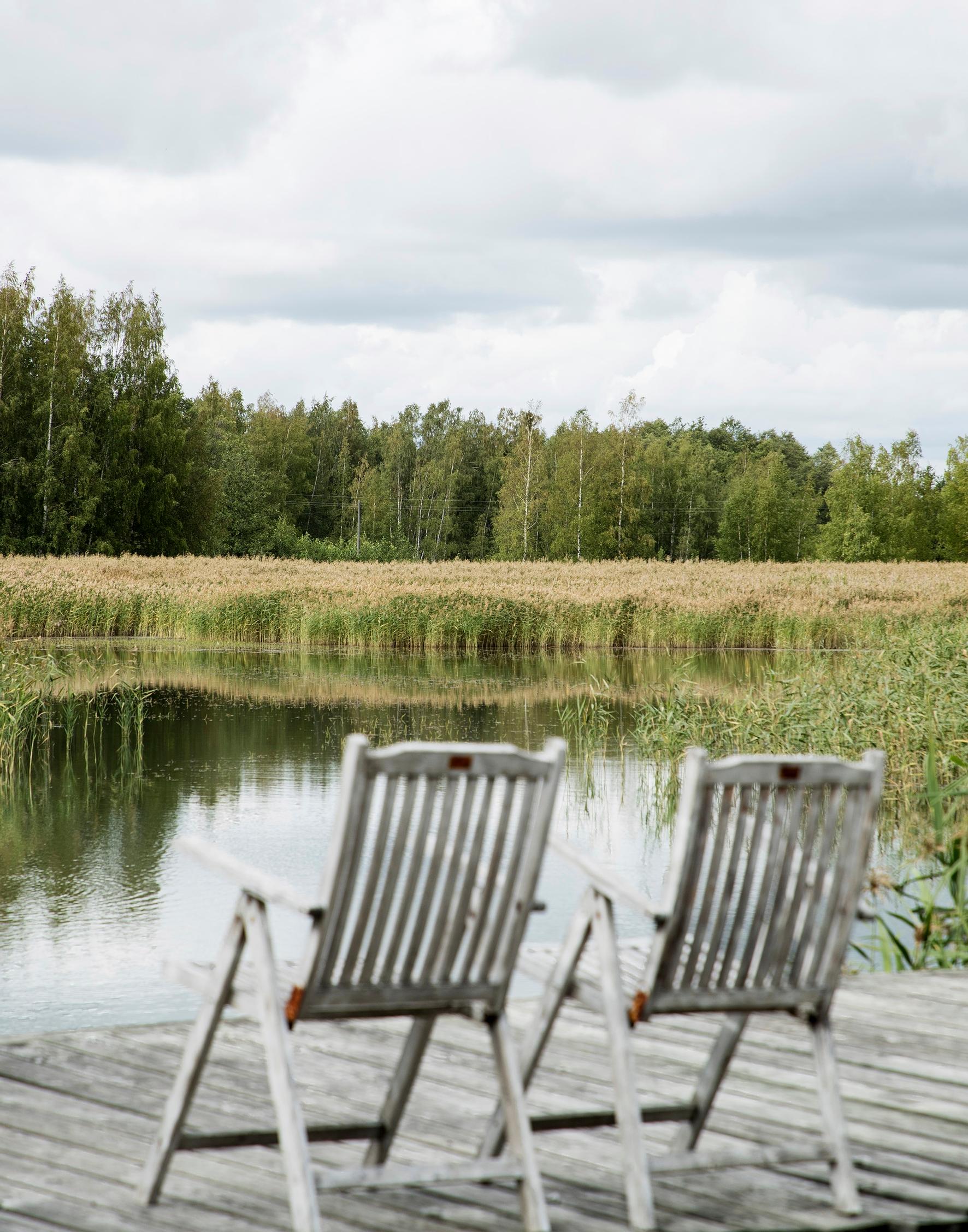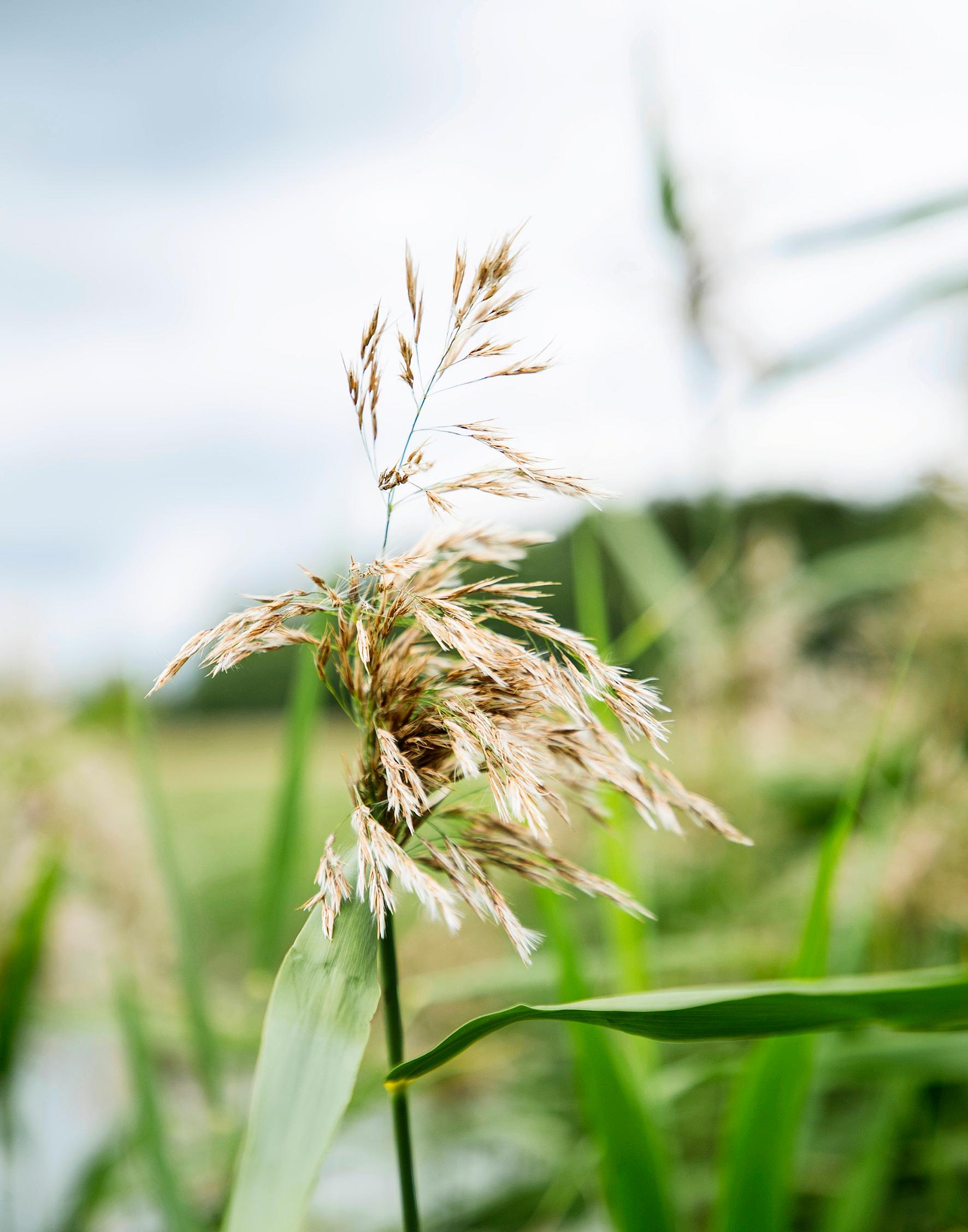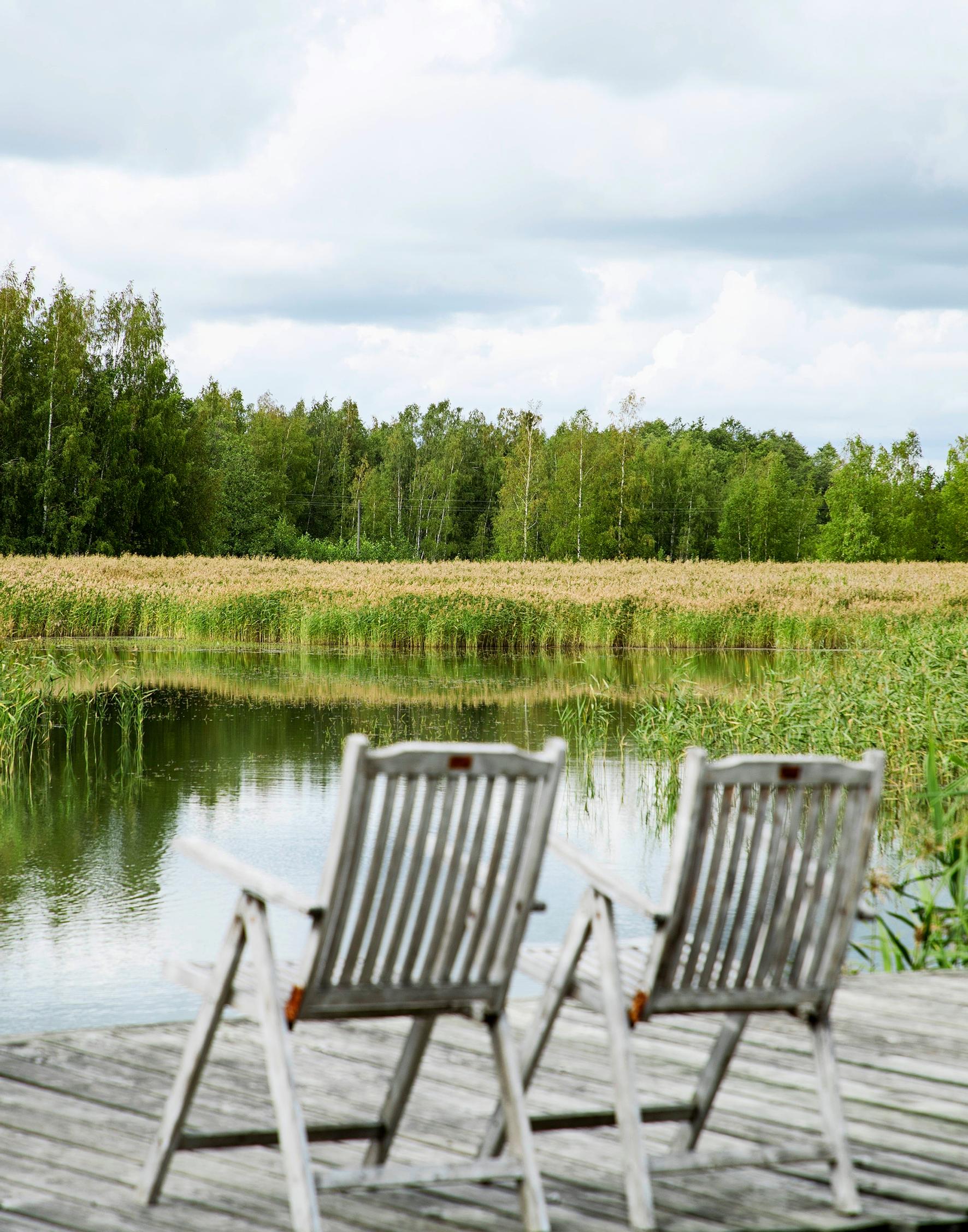
Remove the common reed from your shoreline! An expert’s guide to eliminating the problem
Common reed can easily take over a cottage swimming spot, and removing it is quite labor-intensive. Here you will find an expert’s guide for getting rid of it completely.
The common reed is a familiar sight to many lakeside cottage owners. This tall plant, which has become more widespread due to eutrophication, thrives along shorelines and in shallow water. Wide stands can even take over entire areas. Because its leaves have serrated edges, swimming among them is unpleasant.
When something green starts sprouting in the lake, people often confuse it for lakeshore bulrush. However, bulrush is a different plant that grows in small clusters and generally doesn’t cause problems along cottage shores.
The common reed is doing better than ever because of climate change, but many people want it gone completely. But is that even possible?
—The only truly effective method is to mow the reed stand at least three times between July and August, says Asmo Paloniitty, an expert who specializes in mowing work.
It’s best to start in early summer or at least by late June, before the plants bloom. Early in the summer, the plant draws heavily on its root energy. The next mowing should take place three to four weeks later. Then repeat at least once more in July–August—some believe even three mowing rounds are needed to prevent nutrients from building up in the roots.
Mow the common reed from underwater
Common reed stands are easiest to smother by cutting the stems underwater. If you decide to do it yourself with a scythe, be sure to wear wading boots.
If the area is large or you don’t have the stamina, you can hire a contractor. Shores with firm, relatively rock-free ground may be suitable for tractor mowing. With mechanical mowing, a few ares can be covered in half an hour. Professional machines have a mowing width of 2–4 meters, allowing up to a hectare to be mowed in a day.
—Our goal is to have enough mowing work to fill an entire day on one lake or shoreline. The machines gather the stems and lift them onto the shore.
—The stems of the reed decompose very slowly, Paloniitty says.

One round of mowing isn’t enough for common reed
The key to beating common reed is to starve it. This method works if you mow the stands underwater a couple of times each summer. Just when you think you can celebrate at the end of the summer, remember that one season of effort may not be enough. You’ll likely have to repeat it next year.
—In early summer, the plant draws on its root reserves for growth. When the stand is cut repeatedly, the nutrients never get stored in the roots. In other words, it’s starved, Paloniitty explains.
It’s a bit like establishing a flower meadow, where you mow to remove grasses and excess nitrogen. Paloniitty notes that starving doesn’t work for submerged or floating plants like yellow water lilies or white water lilies.
You can also mow in winter on frozen ground or from the ice, but it’s not as effective as summer mowing. Reed stands are most easily smothered by cutting them underwater.
You’ll likely have to notify local government offices and the water area’s owner some time in advance for any mechanical work. Small-scale manual cuts, like scything, may not require notification.
Beyond the water growth, the problem can spread far onto land. On overgrown shoreline meadows, repeated mowing can help push the reed stands back and lower the vegetation height.
Always use filter fabric
Even when the stems have been cut and piled, wading from the sauna into the water might still be unpleasant. The stubs can remain underwater for several summers. Common reed won’t return to a swimming spot if you lay down filter fabric first. A heavy-duty filter fabric, covered with gravel or sand, will stop roots and reeds from growing through.
Spread the gravel or sand on top of the ice. Paloniitty recommends screened gravel of 3–8 millimeters. A layer of about 20 centimeters usually suffices.
If you plan to dredge the shoreline and the dredged material exceeds 500 cubic meters, you need a special permit.
Make use of the common reed clippings
Always collect all cut plant material from the water. If left to decompose, it will consume oxygen and release nutrients that may increase algae. Stems cut in winter must also be moved off the ice. If you’re doing the work yourself, plan in advance where you’ll stack the reed. If you hire a contractor, decide beforehand where the cuttings will go and who will be responsible. If you have no other use for the material, you can compost it.
Dry reed can be shredded or chopped with a garden shredder. The pieces make good mulch, compost browns, or even field soil enhancers.
Clippings can also be used as feed or bedding on farms. It’s worth asking if a nearby farm could use them. A hectare can yield 5,000–10,000 kilos of dry mass.
Reed cut in winter can be used for crafts or for various structures around the cottage yard.
You can also convert the clippings into what’s known as biochar, which is very climate-friendly. As a soil enhancer, a kilo of biochar can capture up to three kilos of carbon dioxide. Tests have also been conducted on using common reed for heating.
Finally, remember not to remove all the reed. For the sake of biodiversity, keeping patches of common reed here and there offers shelter for fish, birds, and insects.
In the 2000s, around 60 buildings in Finland have been roofed with reed. Common reed can also be used as insulation, which has a very small carbon footprint.

Common reed: 8 quick facts
- You’ll likely have to inform local government about any machine-based mowing some time in advance.
- You may also need to notify about any mowing by hand that exceeds a certain amount of area.
- Remember to inform the owner of the water area.
- There may be rules in place about permitted time periods for mowing. In Finland aquatic plants must be mowed between July 15 and April 30 so birds can nest undisturbed in early summer.
- You should mow the stands at least three times in July–August.
- Common reed can grow up to three meters tall.
- All clippings must be gathered onto land.
Sources also used: Tanja Myllyviita, Finnish Environment Institute, vesi.fi, common reed information bank / ely-keskus.fi


